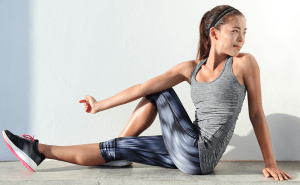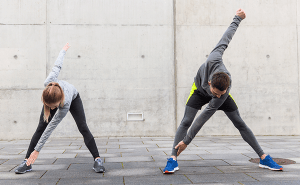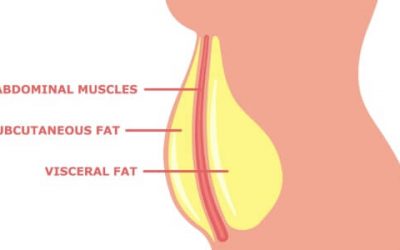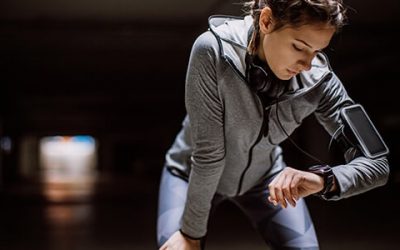
Sitting on your office chair for hours, driving long distances, lifting heavy objects and even the way you sleep can negatively affect your posture. This doesn’t just result in a slouch or the occasional shoulder ache either. Having bad posture can lead to very serious problems for your body, ranging from painful nerve constriction to digestion issues to depression.
But fear not! Although realigning your posture is rarely easy, it’s definitely not impossible with the right stretches, workouts and daily routines. Take a look at the most common posture problems and how the BodyScene team recommends you fix them.
Sway Back
What it is: If you notice that your pelvis pushes forward, causing you to always tilt slightly backwards, it’s likely that you have this syndrome. You’ll feel extra pressure and pain on your glutes, hamstrings and lower back, which could lead to another problem listed below (upper cross syndrome).
How to fix it: Focus on loosening up your leg muscles. Do plenty of leg raises, scissor kicks, and lower body stretches. Try sitting on a chair and resting your right foot on top of your left knee, then pushing your right knee in the direction of the floor. Another useful stretch for sway back is resting the heel of your foot on a chair while standing and reaching for your toes.

Lower & Upper Cross Syndrome
What is it: This common posture problem is caused by a sedentary lifestyle, sometimes referred to as office syndrome. This can occur in the upper back and near the shoulders , as well as the hip area, causing either your pelvis or your shoulders to tilt too far forward.
How to fix it: Those with upper cross syndrome will want to focus on doing back and upper body stretches. Try outstretching your arms in front of you and moving them apart until your total wingspan is one straight line. For lower cross syndrome, work out the lower body with leg, abdominal, butt. and calf stretches.
Rounded Shoulders
What it is: Another common side effect of office syndrome is when your shoulders rotate inward, causing them to fall forward too much and resulting in a hunched posture.
How to fix it: Focus on upper body exercises, such as the seated cable row or a back fly (stand on an exercise band, bend over at 90 degrees, and extend straightened arms out to your sides). Do the same stretch as you would for Upper Cross Syndrome.

Forward Head
What it is: People who spend most of their day in front of a computer screen are likely to slip into this posture. As the name suggests, it’s when your head falls too far forward from your body, aligning your ears in front of your shoulders rather than directly above them.
How to fix it: Because the most common symptom is neck pain and sore upper back, focus on stretching these muscles simply by slowly dipping your chin towards your chest until you can begin to feel the strain in your upper back, rest there for a few seconds and slowly raise your head back up.
Uneven Shoulders
What it is: Every one of us has a naturally dominant side of our body, and it’s common for people to overwork that side, leading to posture problems like one shoulder sitting higher than the other. This means you’re overworking the muscle that runs from the back of the neck into the shoulder of the elevated side, usually resulting in chronic back and shoulder pain.
How to fix it: Do plenty of arm and shoulder workouts. For example, hold an exercise band in front of you with outstretched arms and slowly pull your hands away from each other until the band becomes taut. As silly as it sounds, force yourself to do daily activities with both sides of your body evenly, like talking on the phone, carrying groceries, lifting boxes and even chewing.

Uneven Hips
What it is: Some people may confuse this posture with thinking that one of their legs is shorter than the other, but this problem is all about the hips. With this posture, it’s likely that one of your hips is sitting higher than the other. This can affect the muscles along the side of the waist, lower back and hip, and can cause strain on knees, ankles, shoulders and neck tissue.
How to fix it: Stretch out those hips and strengthen those butt muscles! Try doing the “pigeon pose,” or sit on the floor with one leg outstretched, grab your other knee and pull it to your chest while gently twisting in the opposite direction. On top of those stretches, make sure to avoid high-impact and high-repetition exercises like running until your alignment improves.
Feet turned in or out
What it is: Ideally, both your feet should be parallel, pointing forwards in alignment with your knees. However, some people may find that their toes either point outwards or towards each other, causing a strain on the hips.
How to fix it: Do plenty of knee and leg-focused exercises, including hanging leg raises, seated glute stretch, or squats with the exercise band to help realign your knees and feet.
If you’re worried about trying any of these out yourself, just about every one of our fitness programmes include physical trainer-assisted stretching. But if you want race training, weight loss nutrition planning or anything in between, contact Bodyscene today.



